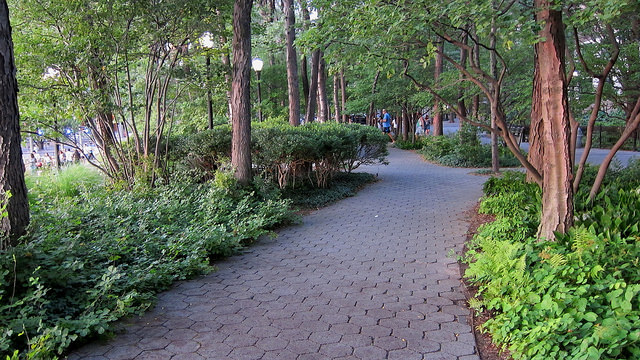Fragrant sumac is an adaptable, low-maintenance shrub perfect for even the toughest situations. It thrives even planted in clay, surrounded by asphalt, and battered and dried by full sun. It spreads to form colonies that retain slopes and block out weeds. As long as you don’t plant it in a bog, it will hold the line and even bring some spring and fall surprises just about anywhere.
Fragrant sumac starts the season out on a strong foot with brilliant chartreuse flower buds opening to clusters of small flowers in March. Glossy green tri-lobed foliage takes over through the summer and then transitions to maroon and crimson in fall. Fuzzy red berries deck the shrubs in fall as well. While fragrant sumac is a dependable work horse, it’s not ideal for all situations. It does tend to spread aggressively by suckers to form colonies, and it does not have a tight and tidy form, so it’s best for filling large areas in tough spots. This sumac gets its name from its very strong smell when leaves or branches are brushed or bent. The scent helps it repel deer and rabbits, but it’s strong enough that it may be off-putting for some people. Before using it in an area with high foot traffic, smell it for yourself to see if it bothers you. Fragrant sumac is native to much of the eastern and central U.S., so its flowers attract butterflies in spring and its berries feed wildlife in the fall and winter.
Common Name: Fragrant Sumac
Scientific Name: Rhus aromatica
Light: full sun to part shade
Size: 4-8’ tall and 6-8’ wide
Notable Varieties: ‘Gro-Low’ (dwarf variety that reaches 18-24” tall)
Soil: tolerates anything but persistently soggy soil
Other Notes: native to Indiana, deer and rabbit resistant, tolerates poor soils and pollution, spreads to form colonies, salt tolerant
See other plants of the month.






